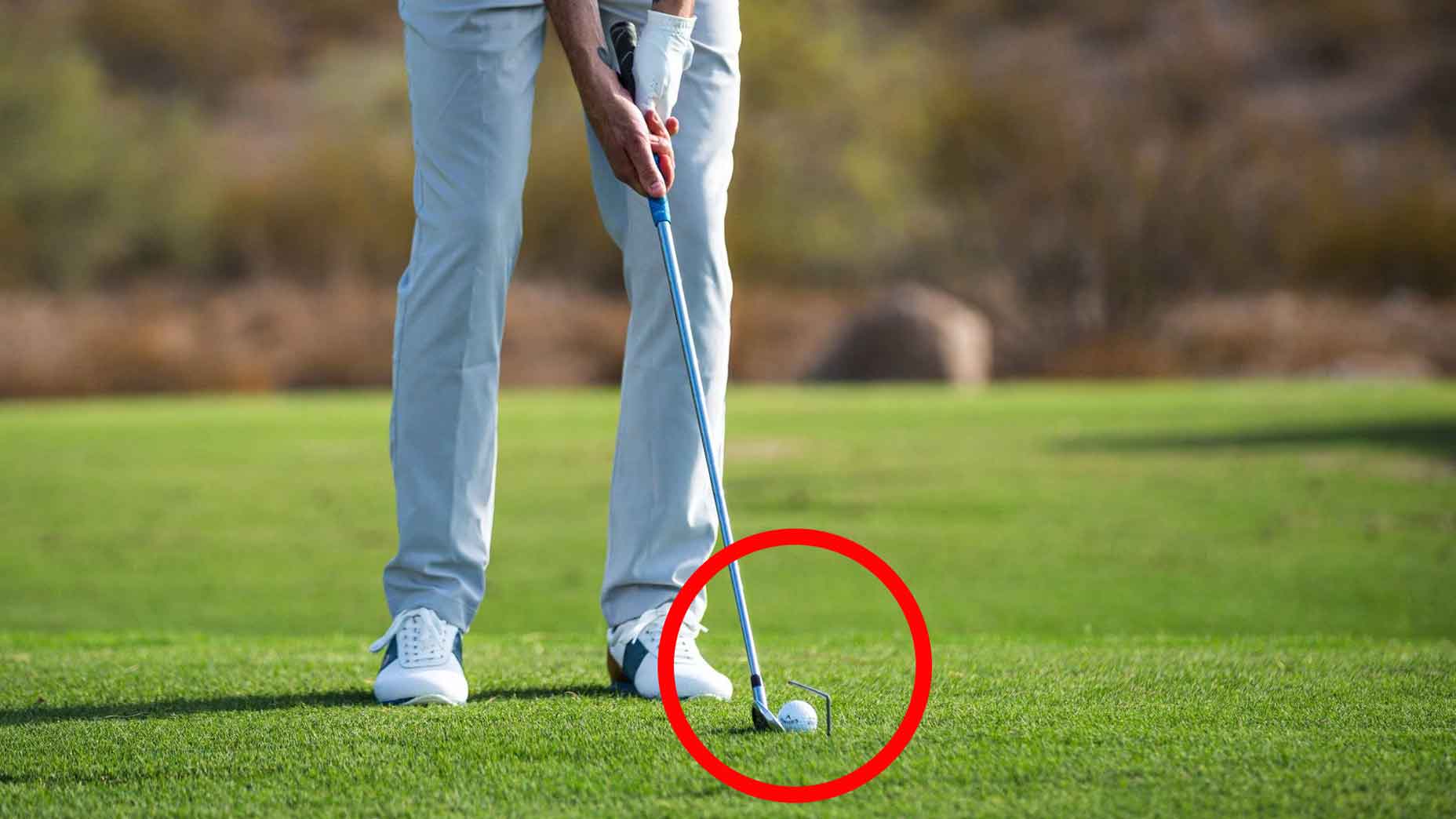Par 4s often create the greatest challenge and variety on a golf course. Long, short, wide, narrow, well-bunkered, water hazards, tree- lined; there are plenty of obstacles you’ll face over the course of a round.
Their varying length and width will allow you to use many different clubs in your bag and test your short game as well. Use the following tactics to master par 4s, no matter what they throw at you.

1. It starts on the tee
While a good tee shot is important on every hole, it is particularly true on par 4s. We have all had those rounds where our tee shots just seem off. Making up for poor distance or recovering from trouble makes for an exhausting round.
The setup is key to hit good solid tee shots, which includes good grip and posture. Proper ball position, more forward in the stance so the shoulders tilt away from the target and the trail shoulder is lower than the lead, will help promote hitting slightly up on the driver.
2. Plan one shot ahead
Whether you’re hitting your tee shots well or poorly, you should always plan your lines based on the next shot. For higher handicaps, whose golf ball spends more time rolling along the ground, that means working the angles. If the green is protected by a large bunker on the right side of the green, you should aim more toward the left center of the fairway. Assuming the rough isn’t extremely long, there may be times where even being off the fairway to enable an easier approach could be a good game plan.

3. Use club selection to build confidence
Building confidence and momentum as you play are an important part of your game plan and this can often be accomplished with smart club selection. Choosing clubs that you have confidence in and that are reasonably easy for you to hit, instead of ones that you think you should hit based on the yardage, is something higher handicaps can benefit a lot from. An example of this would be if the only way you could get to the green would require you to hit your longest fairway wood perfectly. In this scenario, it may be smarter to choose a club that is more manageable, like a mid-iron. Hit a good solid shot, end up just short of the green, but build confidence and momentum in the process.
4. Manage your expectations
Often the right attitude can make a big difference, especially on a difficult, long par 4. Rather than feeling a need to press to match the long distance of the hole, it can put things into perspective to play the hole as a short par 5 in your mind. If you could advance your golf ball around the green as comfortably as you can and then attempt to hit a good short-game shot to give you a chance to convert a putt for an up-and-down par, this often removes unproductive, self-induced pressure.

5. Put the ball in play
Managing your game and the course, especially on par 4s, as there isn’t a lot of time to recover from a large mistake. There are often hazards or locations you simply need to avoid, even if it takes you a bit off the direct course to the green.
Out of bounds will almost always fall into these categories. My son played in a qualifier for his school team and he didn’t hit his driver well. He didn’t hit many fairways, but he did a great job of staying away from the hazards and playing away from OB. While he wasn’t thrilled with his golf, I thought it was great, as he had greatly improved his ability to keep his ball in play and avoided the “no-go” spots.
6. Be more aggressive with shorter clubs (or your favorite) clubs
There are times when you should go for the pin and others when you should just play it safe for the center of the green or the cleaner opening to the green. We all have clubs in our bag that we really like and shorter irons are generally easier to successfully hit solidly and have them land on and hold the green. When you have one of these opportunities, this is when you should consider being more aggressive with your aiming to the target. If you have an approach on your par 4 with a shorter club or your favorite club, this is when you should consider being more aggressive with where you aim. Always be sure there is a gain to your gamble.

7. Think about the easiest chip
When you have a longer club into the green, or if you aren’t hitting the ball particularly well, these are the days that a little more advance planning can help convert more up-and-downs.
Plan to leave yourself on the side of the green where you have the maximum amount of green to work with between the edge of the green and the pin to allow you to possibly choose a lower maintenance putt or chip, rather than needing to hit a high lofted pitch or lob shot. By allowing room for roll with your short game shot, you can stick to simpler stroke motions, which are more reliable. If you do make a mistake, it rarely turns into the large mistake of a high score.

8. Practice lag putting
Due to the varying lengths and shapes of par 4s, there are often times when you have a really long club into the green such a as a fairway wood. This may lead to having really long putts. Being good at controlling your distance and roll of the ball with your stroke size and getting that first putt really close to the pin becomes really important. My college coach used to say, “Most double bogeys end with a three putt,” and he was unfortunately often right. Working on your distance control by simply varying your backstroke length for different distances. Try adding once inch to your backstroke for every three feet in length. It will lead to rolling your first putt closer and stress-free easy tap-ins.
9. Use the terrain
Course architects will often tilt the green to allow you to roll the ball around a hazard and if you have the local knowledge to do so it can help manage the risk of dealing with the hazard. An example of this would be if you have a large bunker protecting the left side of the green and the green tilts quite a bit right-to-left, you could play for the right side of the green, taking the bunker out of play, and let the terrain roll the ball toward the pin. I’m a GolfLogix ambassador (an affiliate company of GOLF.com), and it’s one app I use that really helps with this.

10. Work on your bunker setup
Managing bunker play is a really important par of managing par 4s, whether the bunker is greenside or in the fairway. One of the most basic points of setup adjustment to be successful with both is proper ball position.
When you are in a fairway bunker, you want to hit the ball first, so your ball position should be more neutral or centered, exactly like you would play the ball for a shot from the grass.
In a greenside bunker, you want to play your ball more forward in your stance and this will help you to hit the sand before the ball.










